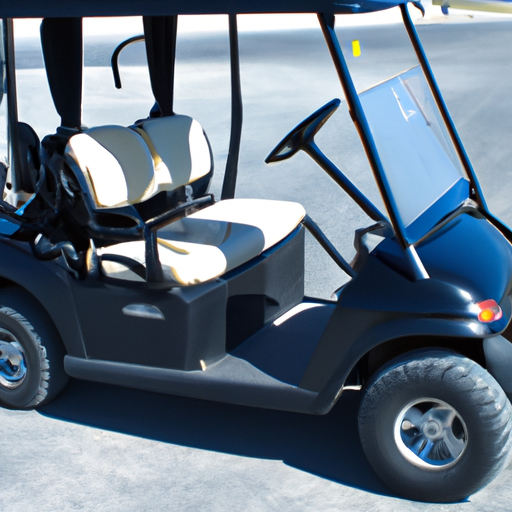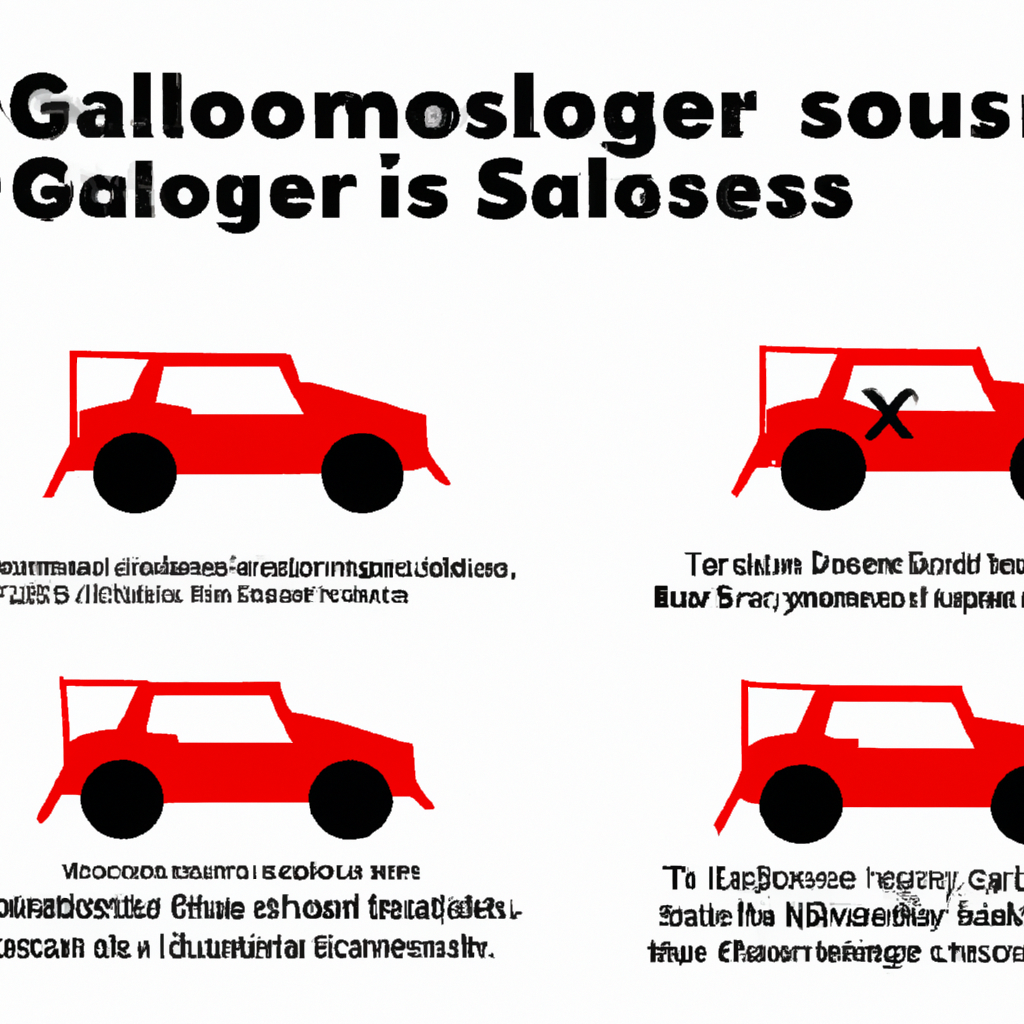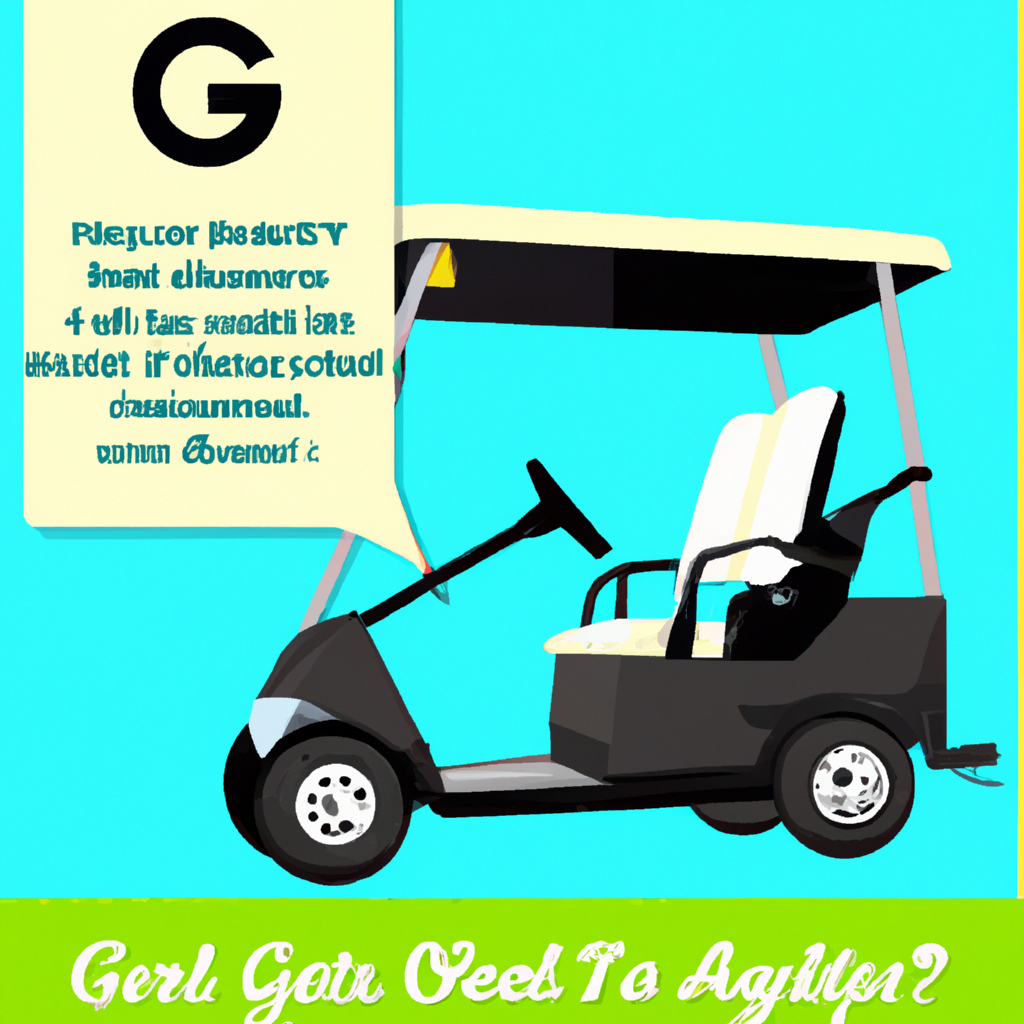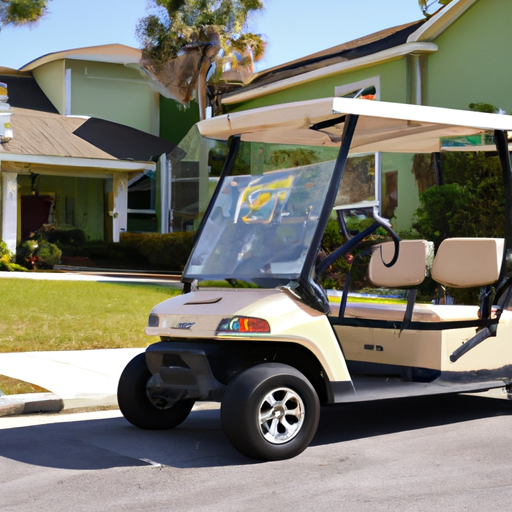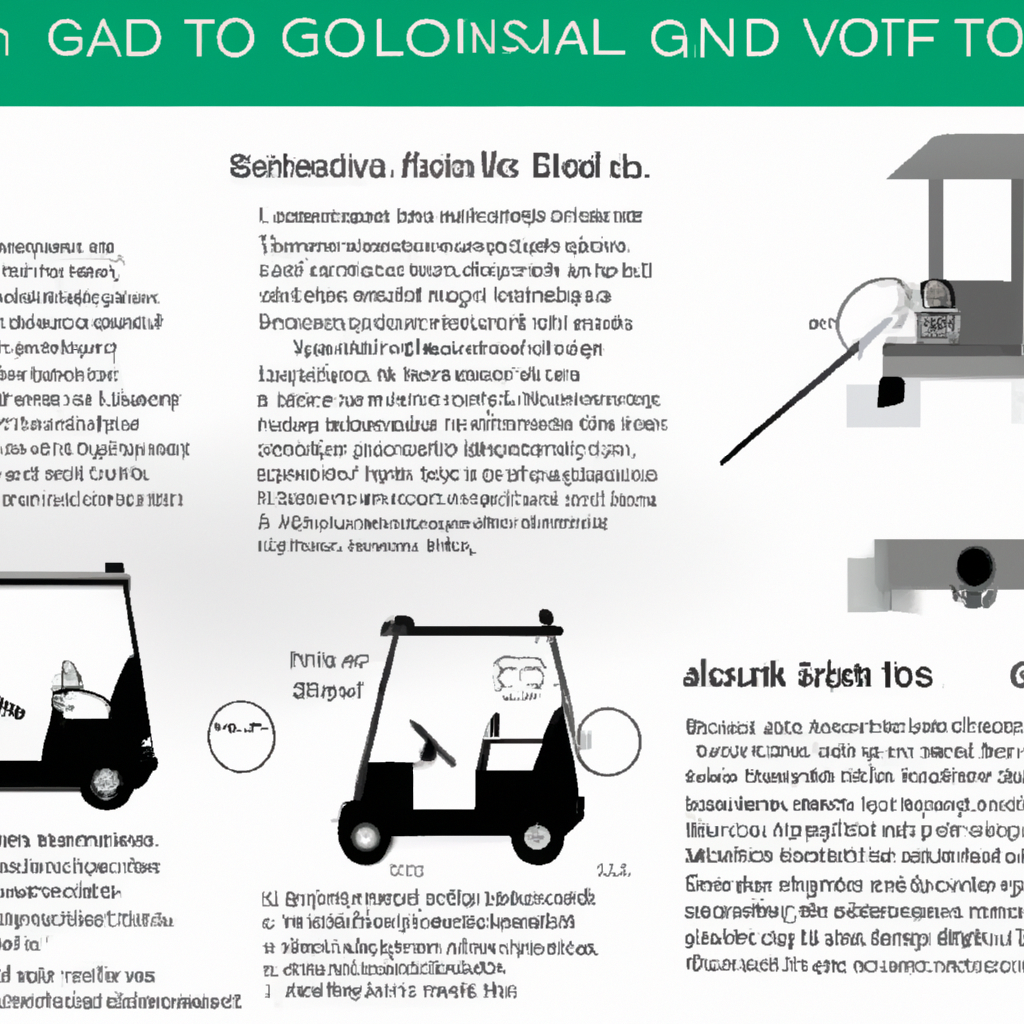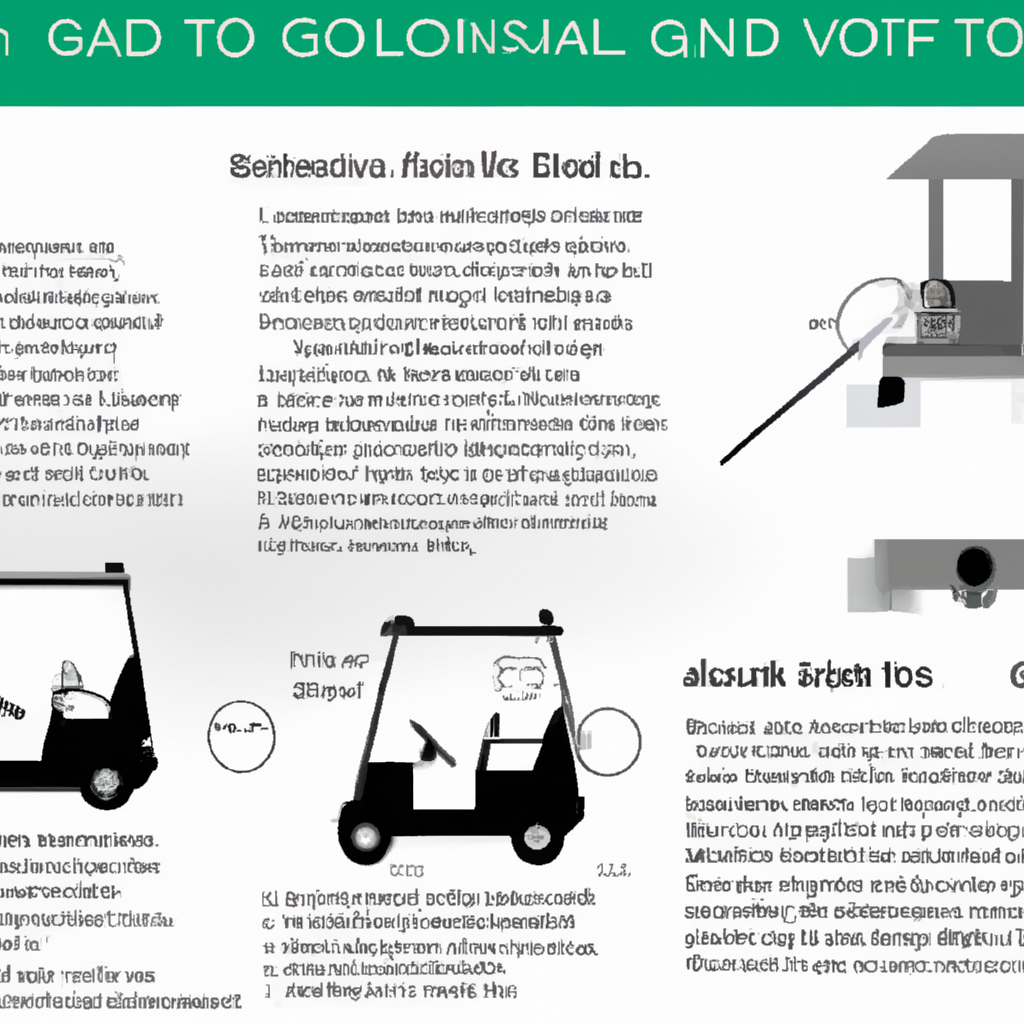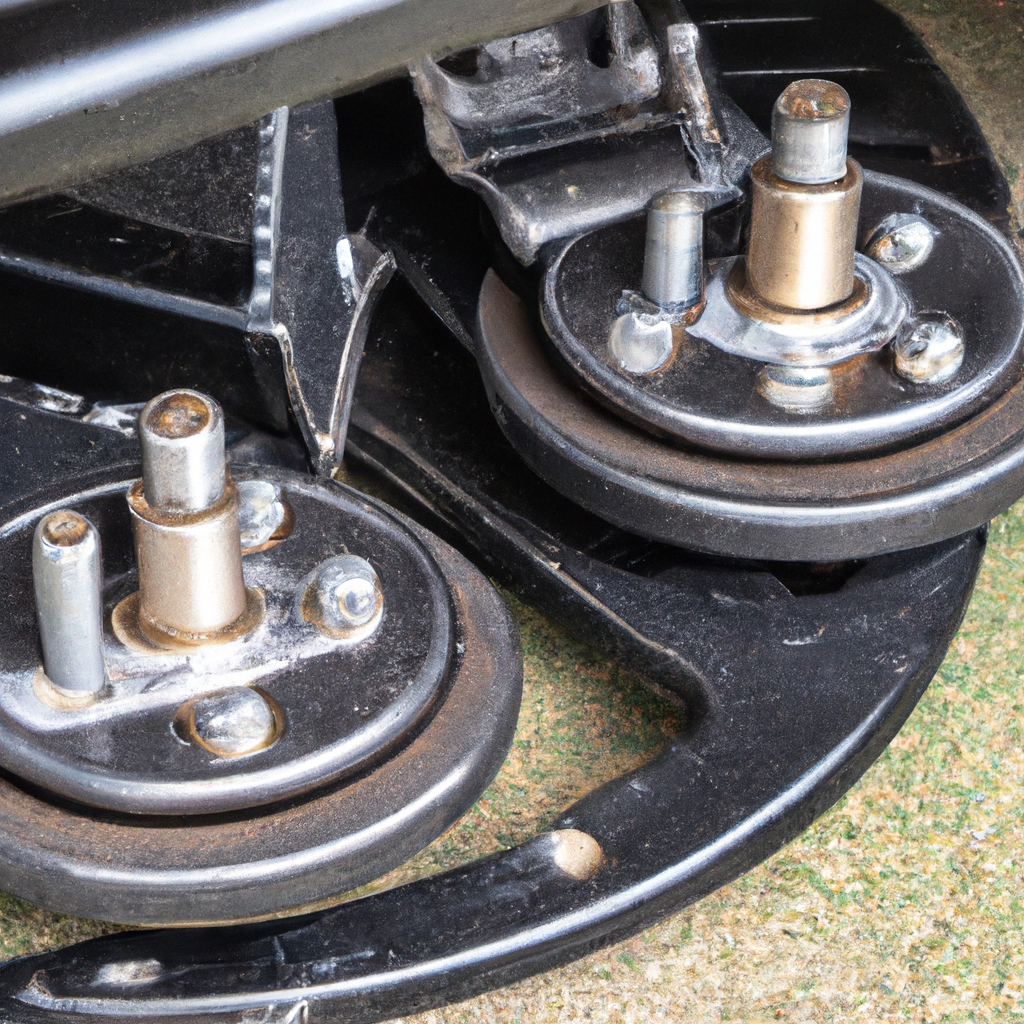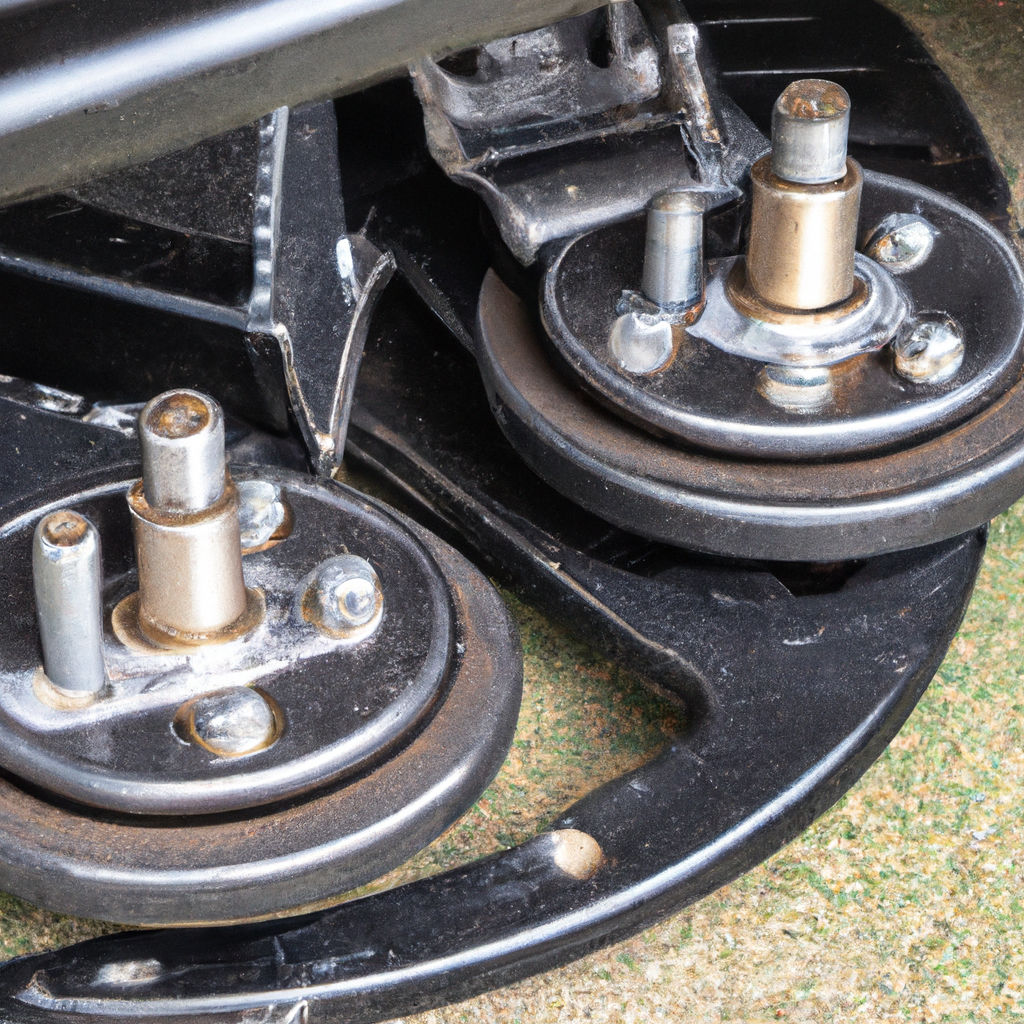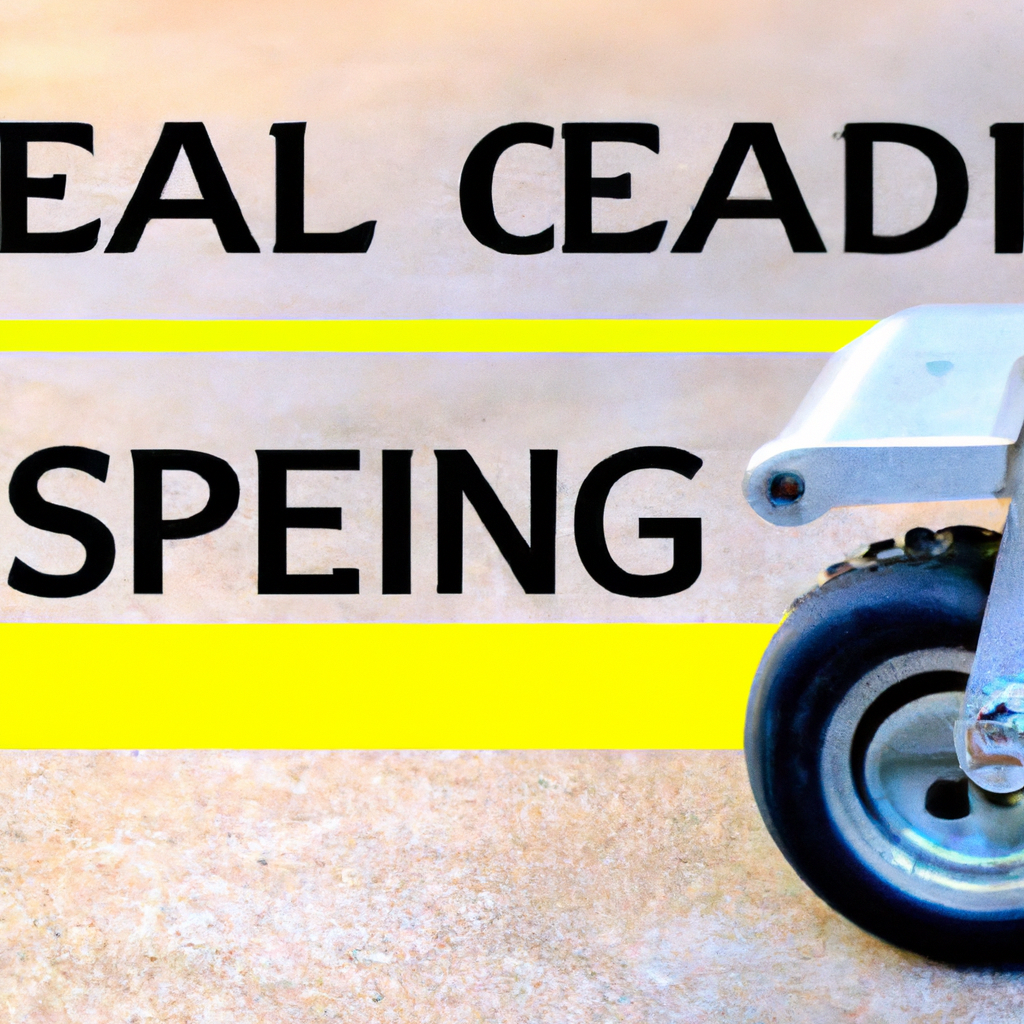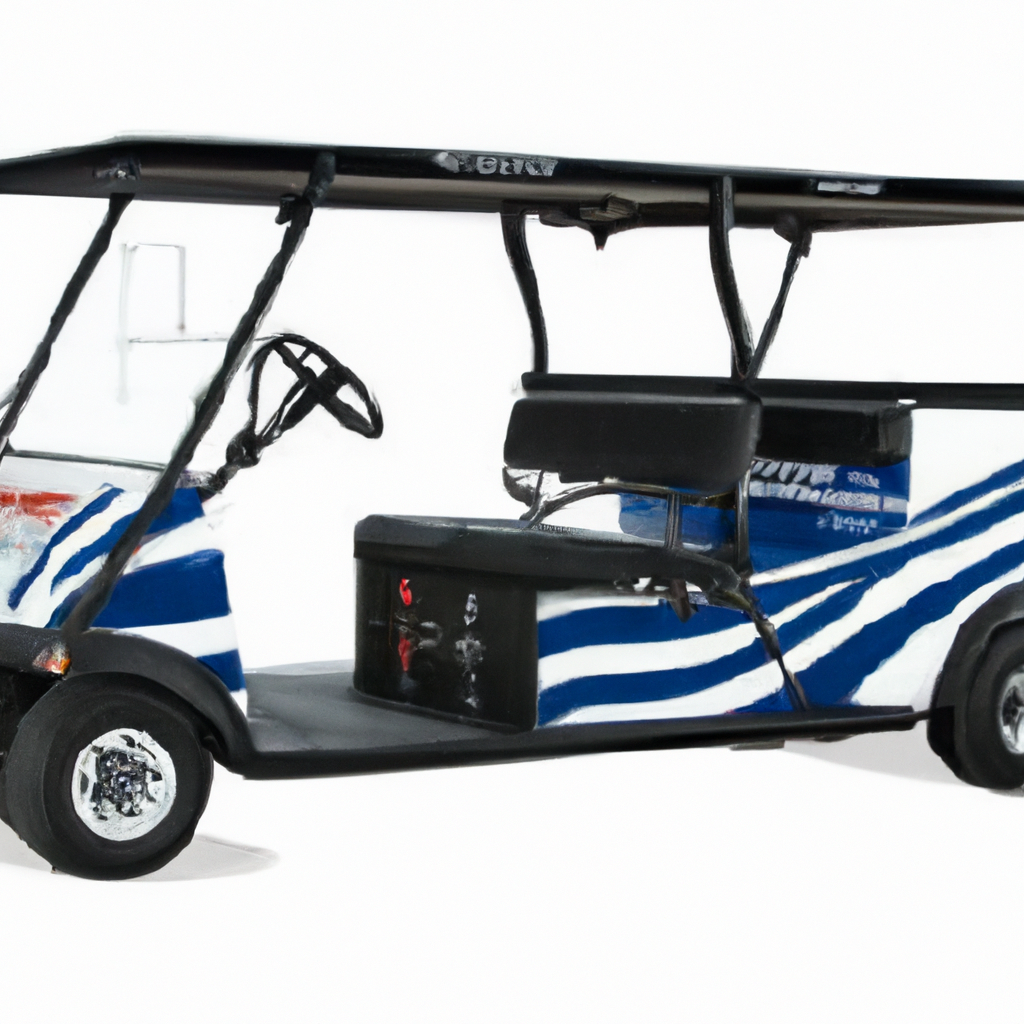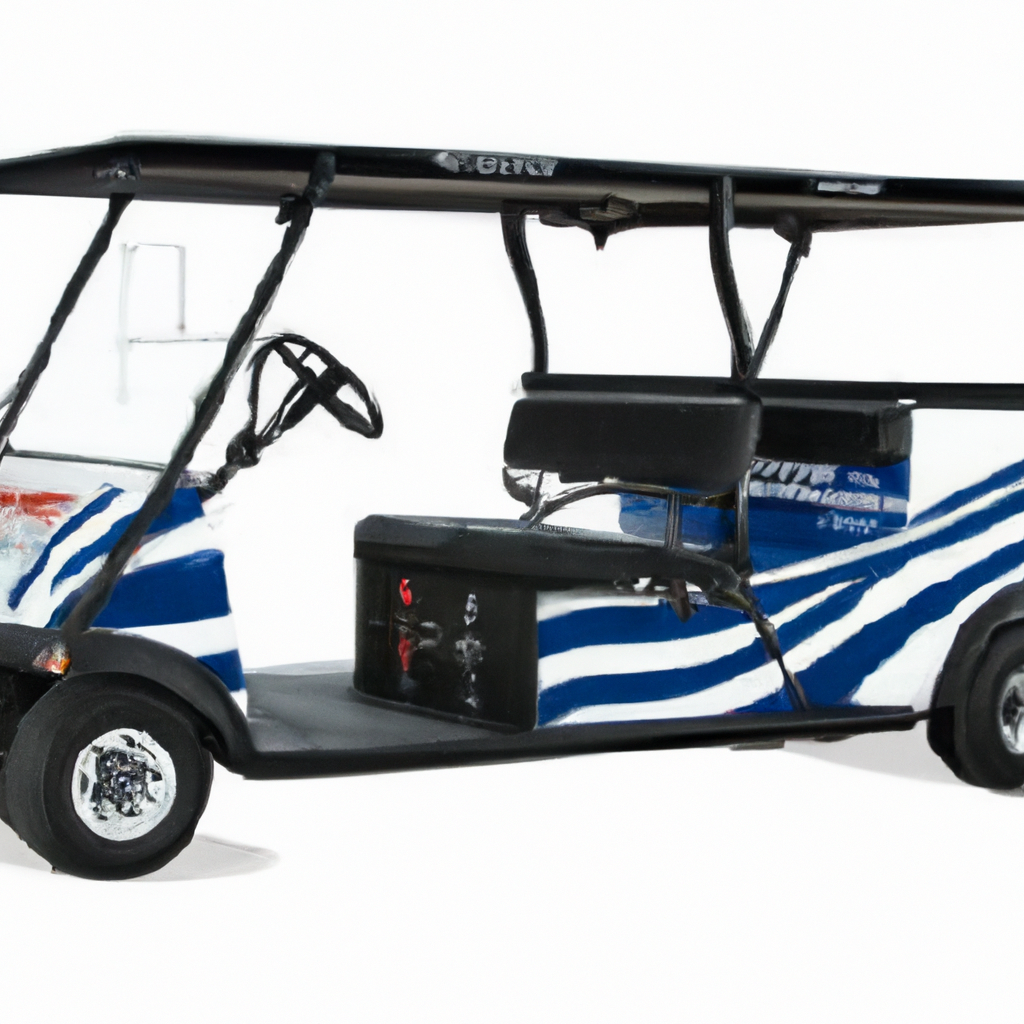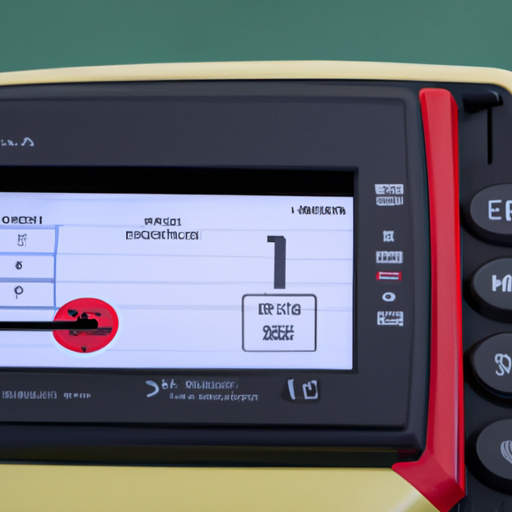Imagine cruising along the golf course, your trusty golf cart carrying you effortlessly from one hole to the next. But wait, how long can you actually finance a golf cart? If you’ve ever pondered this question, you’re in for a friendly surprise. In this article, we’ll delve into the world of golf cart financing and uncover the maximum financing term that awaits you. So, buckle up and get ready to explore the possibilities of embarking on your golfing adventures with a financing term that suits your needs.

Determining the Maximum Financing Term for a Golf Cart
When it comes to financing a golf cart, understanding the maximum financing term is crucial. This determines the length of time you will have to repay the loan, and it can have a significant impact on your finances. To help you navigate this decision, let’s explore the various factors that affect the maximum financing term, the importance of understanding it, the benefits and drawbacks of longer terms, general guidelines to consider, available financing term options, and how interest rates and depreciation come into play. By evaluating these factors, you can make an informed decision that suits your financial goals and needs.
Factors Affecting the Maximum Financing Term
Several factors come into play when determining the maximum financing term for a golf cart. Understanding these factors is crucial in getting a clearer picture of how long you can finance your golf cart. Let’s delve into each of these factors:
Golf Cart Price
The price of the golf cart is an essential determinant of the financing term. Typically, the higher the price, the longer the maximum financing term available. Higher-priced golf carts often require longer terms to make the monthly payments more manageable. Conversely, if you opt for a lower-priced golf cart, you might have the flexibility to choose a shorter financing term.
Individual Creditworthiness
Your creditworthiness is another key factor in determining the maximum financing term. Lenders assess your credit history and credit score to evaluate your ability to repay the loan. If you have a good credit score and a strong credit history, you may qualify for longer financing terms. On the other hand, if your creditworthiness is less favorable, you may be limited to shorter terms or face higher interest rates.
Loan Provider’s Policies
Different loan providers may have varying policies when it comes to financing terms. Some lenders may offer more flexible terms, allowing you to choose the duration that best suits your needs. Others may have limitations or restrictions on the maximum financing term they offer. It’s essential to research and compare the policies of different loan providers to find the one that aligns with your requirements.
Loan Amount
The loan amount you need to finance your golf cart can also impact the maximum financing term. If you require a higher amount to cover the cost of the golf cart, lenders may offer longer terms to facilitate repayment, ensuring that your monthly payments remain manageable.
Down Payment
The size of your down payment can affect the maximum financing term as well. A larger down payment reduces the overall loan amount, allowing you to repay the remaining balance over a shorter timeframe. Conversely, a smaller down payment may necessitate a longer financing term to spread out the payments.
Importance of Understanding the Maximum Financing Term
Understanding the maximum financing term for a golf cart is of utmost importance for several reasons. Let’s explore some of these reasons to highlight why it’s crucial to have a clear understanding of this aspect:
Financial Planning
Knowing the maximum financing term allows you to incorporate it into your long-term financial planning. It provides a clear timeline for when you will fully own the golf cart and can help you align your finances accordingly.
Budgeting
By understanding the maximum financing term, you can budget more effectively. This knowledge enables you to allocate funds towards the monthly payments, ensuring that you can comfortably meet your financial obligations.
Affordability
Understanding the maximum financing term helps you assess the affordability of the loan. It allows you to evaluate whether the monthly payments fit within your budget and ensure that you don’t stretch your finances beyond your means.
Long-Term Commitment
Financing a golf cart is a long-term commitment. Understanding the maximum financing term ensures that you are aware of the duration of this commitment and can plan accordingly. It allows you to evaluate whether you are ready for the responsibility and financial commitment that comes with owning a golf cart.
Benefits of a Longer Financing Term
Opting for a longer financing term can bring several benefits. Let’s explore some of the advantages that longer terms can offer:
Lower Monthly Payments
One of the apparent advantages of a longer financing term is that it lowers the monthly payments. By spreading out the payments over a more extended period, the amount due each month decreases, making it more manageable for your budget.
Improved Cash Flow
With lower monthly payments, a longer financing term can result in improved cash flow. This can free up additional funds to allocate towards other expenses or savings, providing you with more financial flexibility.
Flexibility in Budgeting
A longer financing term offers more flexibility in budgeting. It allows you to distribute your funds across various financial commitments while still meeting your monthly payment obligations for the golf cart loan. This flexibility can be particularly beneficial if you have other financial priorities or unexpected expenses.
Higher Loan Approval Chances
Opting for a longer financing term may increase your chances of loan approval. Lenders may see longer terms as less risky because the lower monthly payments are more manageable. This can be advantageous if you have a limited credit history or a less than perfect credit score.

Drawbacks of a Longer Financing Term
While longer financing terms have their benefits, it’s essential to consider the drawbacks as well. Here are some potential disadvantages of choosing a longer term:
Increased Overall Interest Paid
A longer financing term means more months of interest payments. While it may reduce your monthly payment amount, it also results in paying more in interest over the life of the loan. This can significantly increase the total cost of purchasing the golf cart.
Extended Debt Obligation
By opting for a longer financing term, you extend your debt obligation. This means carrying debt for a more extended period, potentially impacting your financial goals or delaying other financial milestones. It’s crucial to assess whether you are comfortable with an extended debt obligation before committing to a longer term.
Higher Total Cost of Ownership
A longer financing term can lead to a higher total cost of ownership. As mentioned earlier, the extended duration of the loan results in more interest paid, increasing the overall amount you pay for the golf cart.
Risk of Negative Equity
Choosing a longer financing term can also increase the risk of negative equity. Negative equity occurs when the value of your golf cart decreases faster than the pace at which you are paying off the loan. This can lead to owing more on the loan than the golf cart is worth, complicating future trade-ins or resale options.
General Guidelines for Financing Terms
When determining the financing term for your golf cart, it’s essential to consider several general guidelines. These guidelines can help you make an informed decision that aligns with your needs and financial situation. Let’s explore some of these guidelines:
Loan Duration
Consider the duration of the loan and how it aligns with your financial goals. Longer terms may offer more flexibility in monthly payments, but they also come with the aforementioned drawbacks. Evaluate whether a shorter or medium-term loan might be a better fit for your situation.
Resale Value
Take into account the expected resale value of the golf cart. If you plan to sell or upgrade the golf cart before fully paying off the loan, a shorter financing term may be more suitable. This ensures that you have greater equity in the cart when you decide to part ways with it.
Usage Expectations
Consider how often you will use the golf cart and for what purposes. If you anticipate heavy usage or plan to use it for commercial purposes, a shorter financing term may be more appropriate. On the other hand, if it will primarily be for recreational use, a longer term may be more feasible.
Future Upgrades or Modifications
Think about any future upgrades or modifications you may want to make to the golf cart. If you foresee adding accessories or customizations, consider how the financing term might affect your ability to afford these additions.
Balancing Monthly Payments
Lastly, strike a balance between monthly payments and the overall cost of the loan. Aim for a loan term that offers manageable monthly payments while still minimizing the amount you pay in interest over the life of the loan.
Financing Term Options
When it comes to financing terms for a golf cart, several options are available to suit various needs and preferences. Here are some common financing term options:
Short-Term Financing (1-3 years)
Short-term financing offers a quick payoff period, allowing you to fully own the golf cart within a shorter timeframe. While the monthly payments might be higher, this option can help you save on interest payments and reduce the overall cost of ownership.
Medium-Term Financing (4-6 years)
Medium-term financing strikes a balance between shorter and longer terms. It provides manageable monthly payments while spreading out the cost over a more extended period. This option is suitable for those who want a lower monthly payment but still wish to pay off the loan reasonably quickly.
Long-Term Financing (7-10 years)
Long-term financing offers the lowest monthly payments, making it enticing for those on a tight budget. However, it results in higher interest payments and an extended debt obligation. It’s crucial to weigh the benefits against the drawbacks before committing to a longer term.
Custom Financing Terms
Some lenders may offer customizable financing terms based on your specific needs. This option allows you to tailor the term to your requirements, offering greater flexibility in repayment.
Loan Term Limitations
When considering the financing term for a golf cart, it’s important to be aware of any loan term limitations that may be in place. These limitations can vary depending on the lender and the specific loan program. Here are two key loan term limitations to take into account:
Minimum Financing Term
Lenders may have a minimum financing term requirement. This ensures that the loan duration is sufficient for them to recoup their investment. Be sure to check the minimum term set forth by your chosen lender to ensure you meet their requirements.
Maximum Financing Term
Similarly, lenders may have a maximum financing term beyond which they cannot provide financing. This is often determined by the loan amount and the lender’s policies. Familiarize yourself with the maximum term offered by lenders to guide your decision-making process.
Comparison with Other Vehicles
Keep in mind that the financing terms available for golf carts may differ from those of other vehicles, such as cars or recreational vehicles. This is due to the nature and use of golf carts, as well as their depreciation rates. Consider these differences to ensure that the financing term for your golf cart is appropriate and in line with industry standards.
Financing Term vs. Depreciation
Understanding the relationship between the financing term and depreciation of a golf cart is crucial when making your financial decisions. Let’s explore this relationship:
Understanding Golf Cart Depreciation
Like any vehicle, golf carts experience depreciation over time. Factors such as usage, condition, and market trends can influence how much a golf cart depreciates. Understanding this depreciation can help you estimate the future value of the cart and the impact it may have on your loan.
Managing Loan Term to Avoid Negative Equity
By aligning the financing term with the expected depreciation of the golf cart, you can minimize the risk of negative equity. Negative equity can occur when the loan amount exceeds the market value of the golf cart. To avoid this situation, consider choosing a financing term that allows you to maintain positive equity throughout the life of the loan.
Impacts of Interest Rates on Financing Term
Interest rates play a significant role in determining the affordability of your golf cart financing. Higher interest rates can increase the overall cost of the loan, making it essential to carefully consider the impact of interest rates on the financing term. A longer financing term may result in paying more in interest over time, so it’s crucial to compare rates and determine the most favorable option for your financial situation.
Evaluating Your Financing Options
To make an informed decision about your golf cart financing, it’s essential to evaluate your financing options thoroughly. Consider the following steps:
Loan Comparison
Compare the terms, interest rates, and conditions offered by different lenders. This allows you to get a comprehensive understanding of the various financing options available to you. Take into account factors such as the loan duration, monthly payments, and the total cost of the loan over its duration.
Affordability Assessment
Carefully assess your financial situation to determine what you can comfortably afford in terms of monthly payments. Consider your income, expenses, and other financial obligations. Be honest with yourself about what you can realistically manage to avoid stretching your finances too thin.
Seeking Professional Advice
If you’re uncertain about the best financing option for your golf cart, consider seeking advice from a financial advisor or loan specialist. These professionals can provide valuable insights specific to your circumstances and help guide you towards the most suitable financing solution.
In conclusion, understanding the maximum financing term for a golf cart is essential for making an informed decision that aligns with your financial goals and needs. Consider the factors affecting the maximum term, evaluate the benefits and drawbacks of longer terms, and be mindful of general guidelines regarding financing terms. By thoroughly evaluating your financing options and considering the impacts of interest rates and depreciation, you can confidently manage the financial aspects of owning a golf cart. So, take the time to determine the financing term that best suits your budget, long-term plans, and overall financial well-being.

